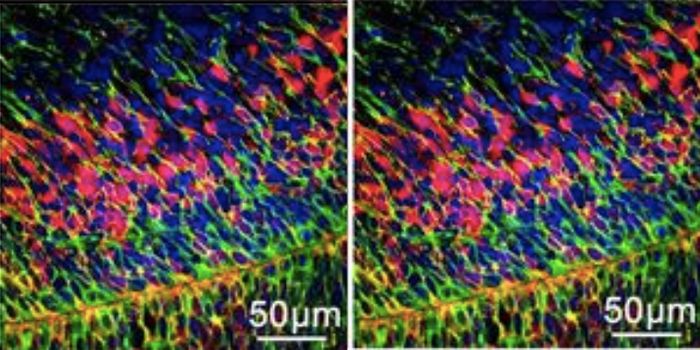The Giraffe Genome Explains Some of Its Unusual Characteristics
Giraffes are unique and have made many evolutionary adaptations. Scientists have now learned more about the unusual physiology of this animal by studying its genome. One giraffe gene in particular attracted the researchers' attention because it may help protect these animals from the damaging effects of high blood pressure, which is needed to maintain the supply of blood to its lofty head.
The giraffe version of a gene known as FGFRL1 seems to have acquired many more changes than the one carried by other animals. Reporting in Science Advances, the researchers used gene editing techniques to model the effects of the giraffe FGFRL1 gene in mice. When these mice and normal mice were exposed to a drug that raises blood pressure, there was less organ and cardiovascular damage, and denser bones in the animals that carried giraffe sequences in their FGFRL1 gene.
"Both of these changes are directly related to the unique physiological features of the giraffe - coping with high blood pressure and maintaining compact and strong bones, despite growing them faster than any other mammal, to form the elongated neck and legs," noted a co-lead study author Rasmus Heller of the Department of Biology at the University of Copenhagen.
Many animals simply arise from slumber without much effort, but giraffes have to take time and energy to stand up again, and it's especially awkward if they have to run from a predator. Unsurprisingly, these animals are restless and spend less time sleeping than any other mammal. They have sleep cycles that are as short as half an hour, and in the wild, they can get by on that little every day, but they tend to sleep about four hours a day in captivity. It seems that their genome plays a crucial role in this reduction in their sleep requirement.
"We found that key genes regulating the circadian rhythm and sleep were under strong selection in giraffes, possibly allowing the giraffe a more interrupted sleep-wake cycle than other mammals," noted Heller.
Some of their sensory perception abilities seem to have been diminished as a trade-off.
"Giraffes are in general very alert and exploit their height advantage to scan the horizon using their excellent eyesight. Conversely, they have lost many genes related to olfaction, which is probably related to a radically diluted presence of scents at five meters compared to ground level," explained Heller.
Evolutionary pleiotropy is the idea that changes in one gene have an influence on multiple characteristics of an organism. The effects of the strongly selected giraffe genes appear to be an example of this phenomenon, which can also help explain how huge phenotypic changes can be seen in a very short period of evolutionary time.
The research also suggests that the giraffe FGFRL1 gene can provide insight into human cardiovascular disease.
"These results showcase that animals are interesting models, not only to understand the basic principles of evolution but also to help us understand which genes influence some of the phenotypes we are really interested in such as those related to disease. However, it's worth pointing out that genetic variants do not necessarily have the same phenotypic effect in different species, and that phenotypes are affected by many other things than variation in coding regions," noted a co-lead study author Qiang Qiu of Northwestern Polytechnical University.
Sources: AAAS/Eurekalert! via University of Copenhagen - Faculty of Science, Science Advances









